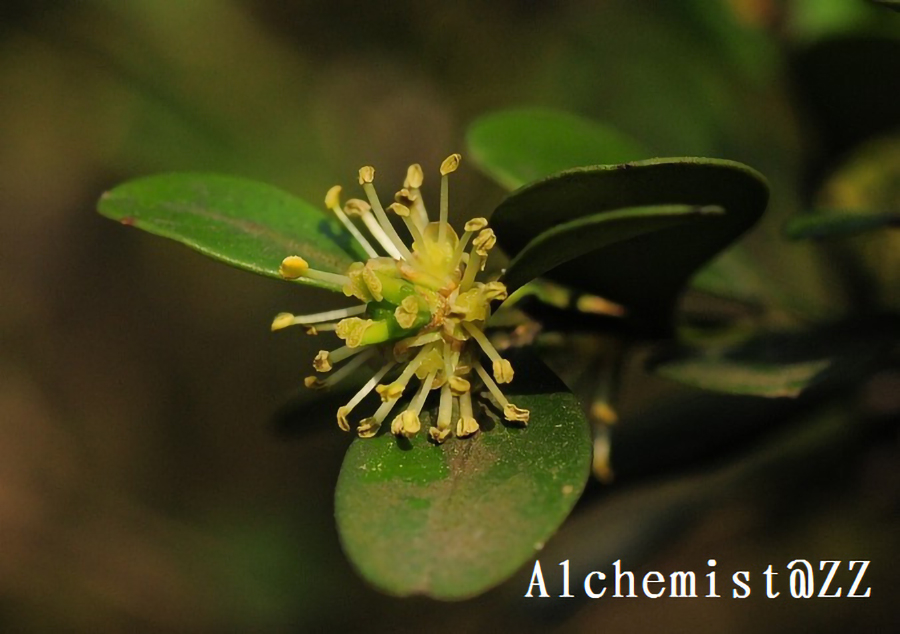- Scientific Name: Buxus sinica (Rehder & E. H. Wilson) M. Cheng
- Ref: Fl. Reipubl. Popularis Sin. 45(1): 37. 1980.
- English Common Name: Chinese boxwood
- Chinese Common Name: 黄杨 huángyáng
- Family: Buxaceae
- Genus: Buxus
- Distribution: Forests in mountain valleys and on slopes, thickets, streamsides, stony areas; 600-2600 m. Anhui, Chongqing, Fujian, Gansu, Guangdong, Guangxi, Guizhou, Hubei, Hunan, Jiangsu, Jiangxi, Shaanxi, Shandong, Sichuan, Taiwan, Zhejiang.
Shrubs or small trees; branchlets terete, longitudinally ribbed, grayish white; young branches tetragonous, pubescent; internode (3-)5-20 mm. Petiole 1-2 mm; leaf blade varied in shape and size, broadly elliptic, broadly obovate, orbicular, obovate, obovate-oblong, or elliptic-lanceolate to lanceolate, (5-)7-35 × (3.5-)5-20 mm, leathery, thickly leathery, or thinly leathery, shining adaxially, glabrous on both surfaces or puberulent along basal half of midrib, base rounded to cuneate, apex rounded, obtuse with retuse tip or acuminate with acute tip; midrib elevated adaxially, lateral veins obscure and rugulose adaxially. Inflorescences axillary, capitate; rachis 3-4 mm, pubescent; bracts broadly ovate, 2-2.5 mm, ± pubescent abaxially. Male flowers ca. 10, sessile; outer tepals ovate-elliptic; inner tepals suborbicular, 2.5-3 mm, glabrous; stamens ca. 4 mm; sterile pistil with clavate gynophore, apex slightly inflated, ca. 2 mm, sterile pistil and tepals length ca. 2:3 or equal to 3:2. Female flowers: tepals ca. 3 mm; ovary slightly longer than style, glabrous; style thick and compressed; stigma obcordate, decurrent to middle part of style. Capsule subglobose, 6-8(-10) mm; persistent style 2-3 mm. (Flora of China)
